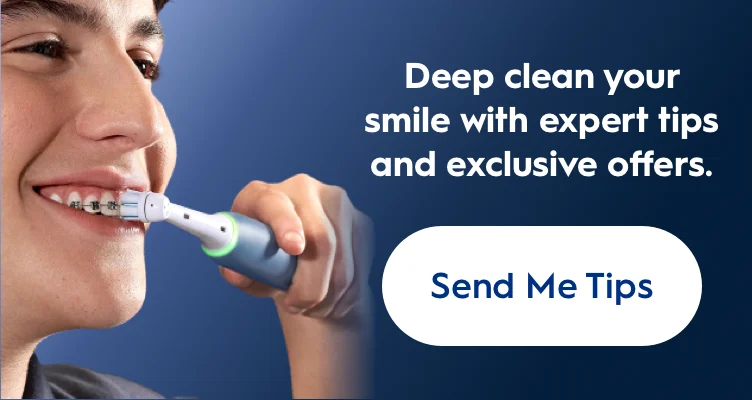
Daily flossing is especially important when wearing braces because you're more likely to have plaque buildup and food particles trapped in the braces, bands, and wires, which could increase your risk of cavities or tooth decay.
Steps to Follow when Flossing with Braces
Although flossing with braces is tricky, you can get the hang of it with practice if you follow these steps:
Floss type - Use waxed floss, dental tape or a product specifically designed to clean around your braces. Unwaxed floss is more likely to get caught and shred while cleaning braces.
Floss length - About 45 cm (18 inches) of floss should suffice.
Thread movements – To clean teeth with braces, take the floss and carefully thread it under the main wire of the braces before passing it between two teeth. Then remove the floss and re-thread it under the main wire to pass between the next pair of teeth.
How to use floss - Be sure not to snap the floss as you clean teeth with braces, simply move it up and down gently against the side of each tooth.
Parents: Do the flossing for younger children when cleaning braces since they may lack the coordination to thread the floss under the main wire of their braces.
For an even more complete clean, pair string floss with a water flosser like the Oral-B AquaCare Oral Irrigator. It features the latest in gum care Oxyjet Technology with water-enriched, microbubbles of air—to help target and help eliminate plaque bacteria for cleaner teeth and healthier gums.
How to Brush with Braces
Cleaning around brackets and wires can get tricky. Often, when not brushed properly, plaque and food particles get left behind—making brushing with braces that much more important.
Here’s the proper brushing technique to follow when wearing braces:
Get started: Remove elastics, bands, or removable parts of orthodontic appliances.
Clean your braces: Carefully clean around wires and pins.
Brush each wire: Move top to bottom, and all the way around upper and lower teeth.
Brush your teeth: Dental professionals recommend brushing your teeth for two minutes, twice daily. That means each quadrant of your mouth gets 30 seconds.
Rinse, and then check your teeth: Rinse thoroughly. Examine teeth and braces in the mirror and remember to look for any remaining food particles.
While wearing braces, consider brushing with an electric toothbrush equipped with a sensitive mode, like that of the Oral-B iO Series. The sensitive mode oscillates at a lower speed for extra care and comfort along the gumline—and around the brackets and orthodontic wires. Pair it with the iO Gentle Care Brush Head for a gentler clean on sensitive teeth and gums.
Time Matters
Be prepared to spend three times as long on your oral care while you have braces on your teeth. Don't worry, it's worth the time—if you don't pay attention to oral hygiene while your teeth are being realigned, you increase your risk of gum disease and white spot lesions. Plus, it can help your teeth look that much better when it's finally time to get your braces removed.
Related Articles
Sign Up
for expert advice and exclusive offers





